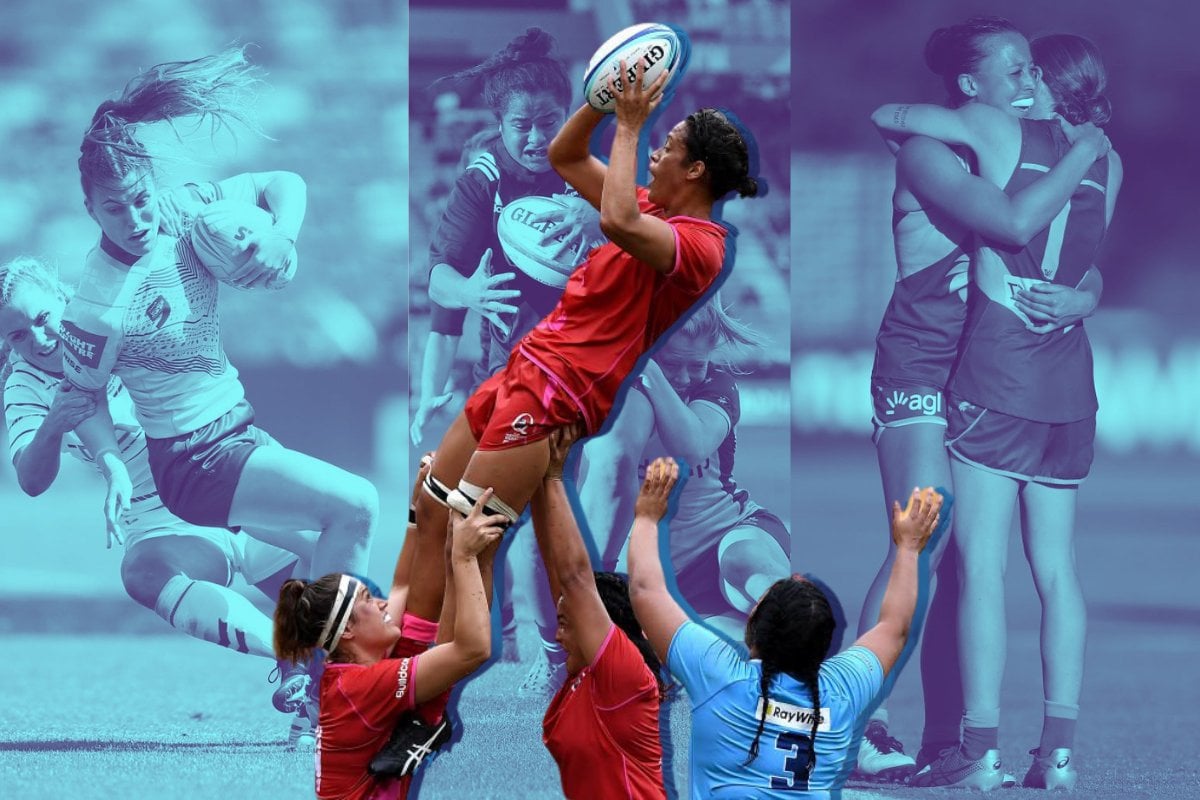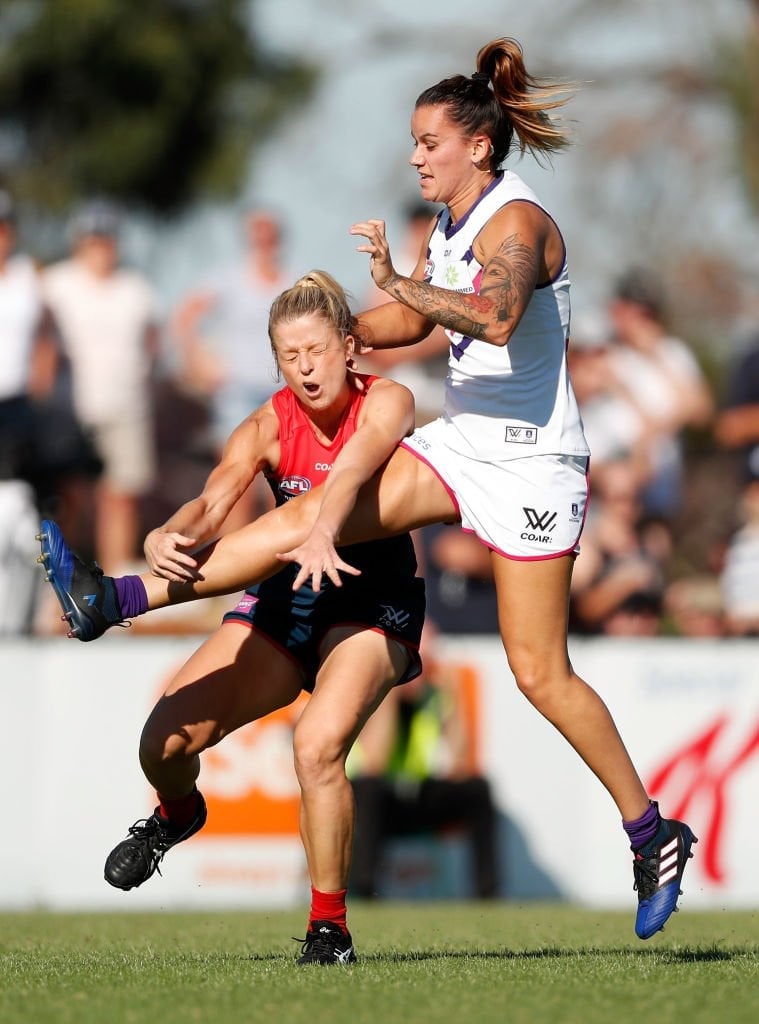
Kirby Sefo knows the risks that come with being a woman in contact sports.
Last year, the 32-year-old took a hit while playing for the Queensland Reds in the Super W which left her with several facial fractures.
She was forced to retire early, under a year out from the 2021 Women's Rugby World Cup where she would have represented Australia in the Wallaroos.
"There's two sides to it," she told Mamamia, reflecting on playing a male-dominated sport.


Top Comments
If there is a form, it's a soft tissue injury to the chest. Done.